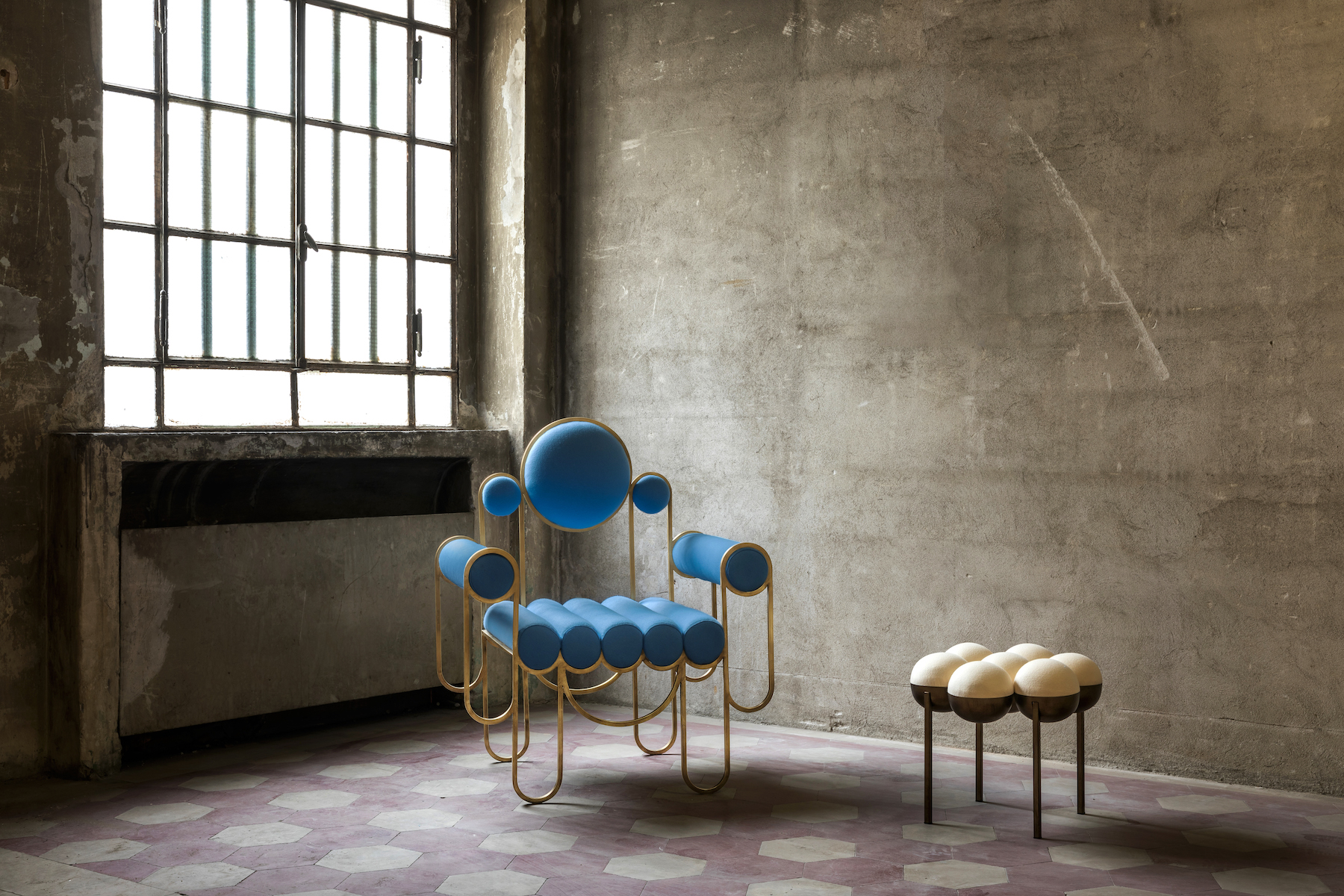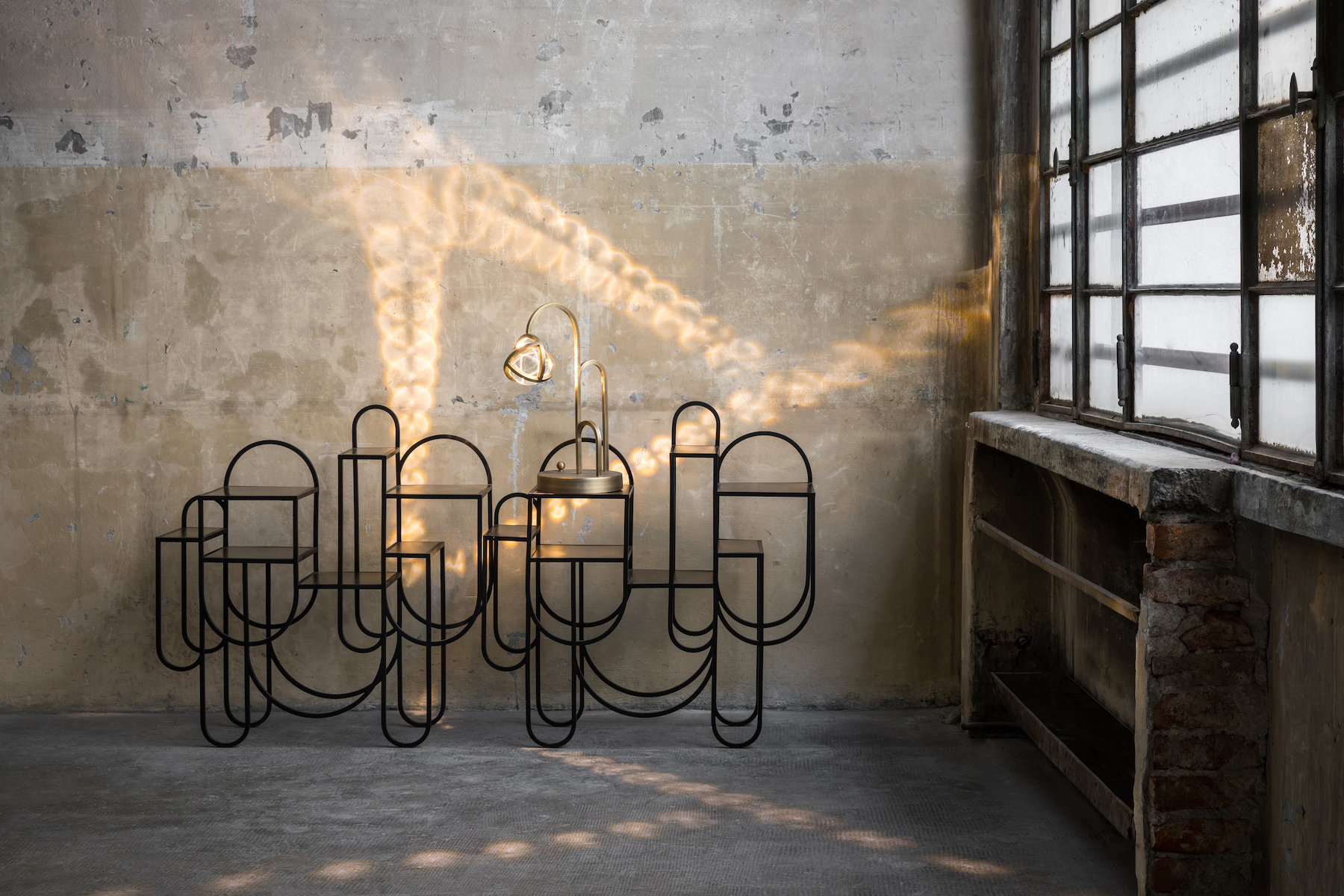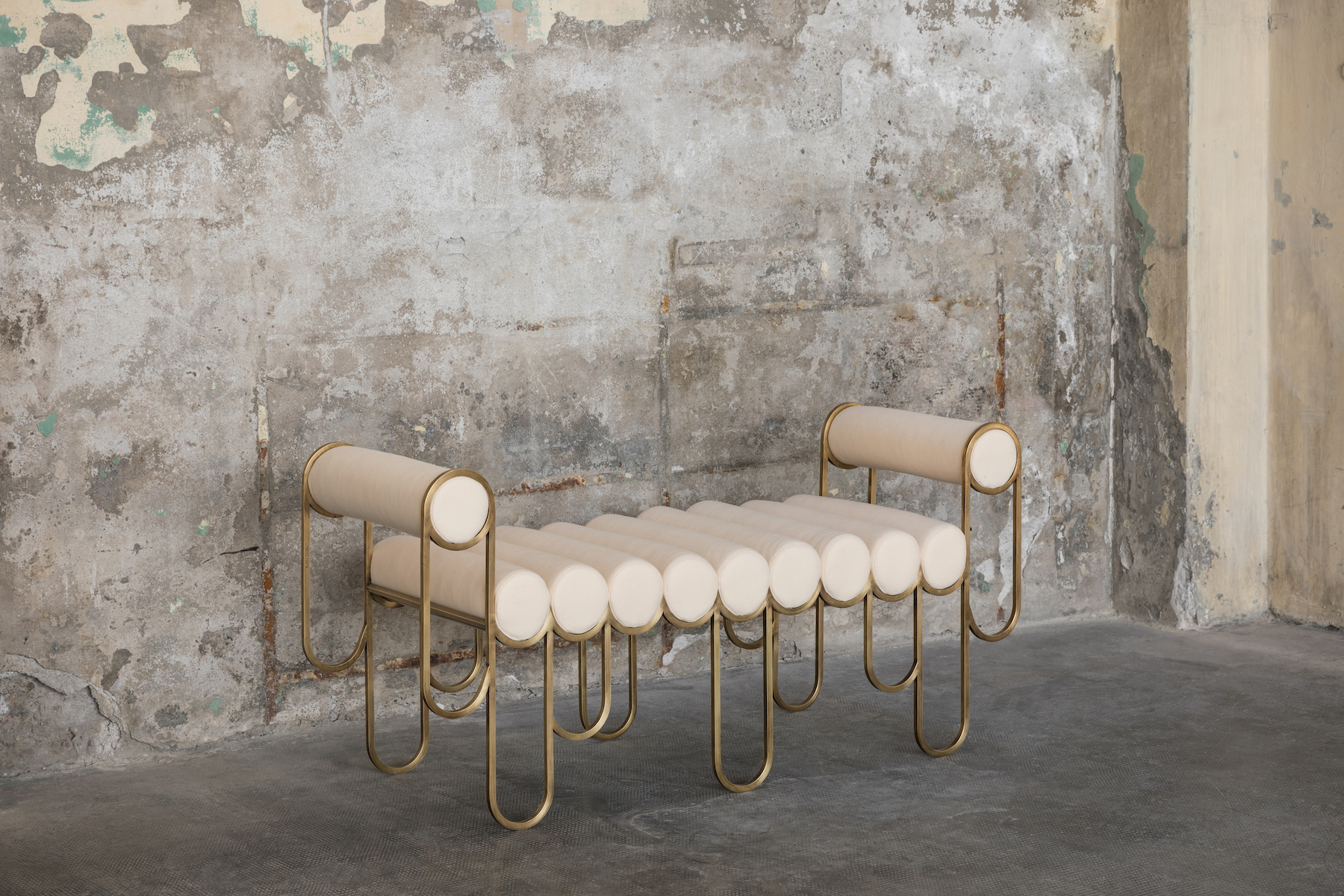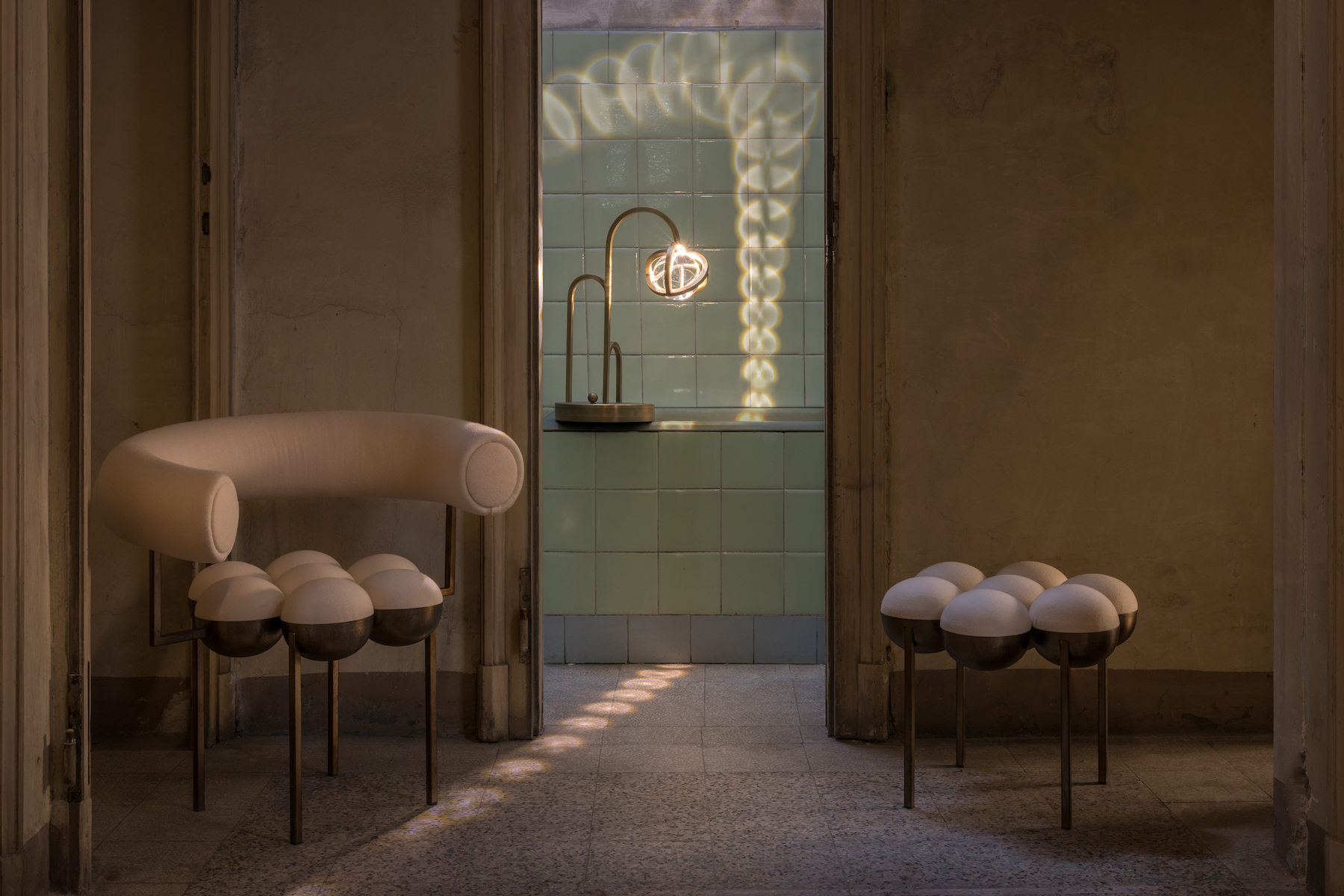“As a creative, I always try to push myself into the unknown, not knowing exactly where I’ll land,” says Lara Bohinc. It’s an apt metaphor for the Slovenian designer’s illustrious career, which spans more than a decade of creative consultations for Montblanc, Gucci, and Cartier, as well as the launch of her eponymous design studio in London. Her furniture and lighting employ deft metalworking techniques that venture into the “unknown” with poise and adventure. The Solaris Kinetic Table, which debuted at Salone del Mobile in 2014, consists of four stacked rings of marble plates that rotate orbit-like around a central axis. A line of chairs released this past year incorporates the gravitationally curved trajectories of planetary orbits, while splitting orbs inform Collision, her first lighting collection.
Lara Bohinc’s Furniture Will Send You Into Space
Evoking orbital motion and celestial motifs, the Slovenian furniture designer’s Planetaria collection of lighting, seating, and storage pens a love letter to the cosmos.
BY RYAN WADDOUPS
July 19, 2019


Since then, Bohinc has taken her interstellar fascinations into full throttle. Her latest furniture line, called Planetaria, explores the same split-sphere motifs that define her earlier work yet launches it into unexplored territory. “I looked to the moon’s shape—its orbital movements, spheres, curves, and arches,” says Bohinc, who cites these motifs, along with feminine geometry, deconstruction, and reconfiguration as her favorites.
The Apollo loveseat and armchair, named for the spacecraft that sent Neil Armstrong and Buzz Aldrin to the moon 50 years ago, features a series of plump cylindrical cushions that float cloud-like within a looping frame. Similarly skybound are the bilboquet seat constructions that define the Saturn Chair and Pouffes. The Apollo Console, which resembles a playful 3-D sketch of loops and semi-circular arcs, is perhaps the most impressive. Pair it with the Planetaria Table Light—in which light reflections and refractions ricochet off a transparent glass orb—for a spellbinding display of celestial motion. “The Apollo Space Mission established a new positive outlook on the future and achieved what was once considered impossible,” Bohinc says. Planetaria, albeit on a smaller scale, achieves that same sense of wonder.



